As Russia attempts to destroy Ukrainian identity, Ukraine cherishes its blue and yellow banner (PHOTOS)
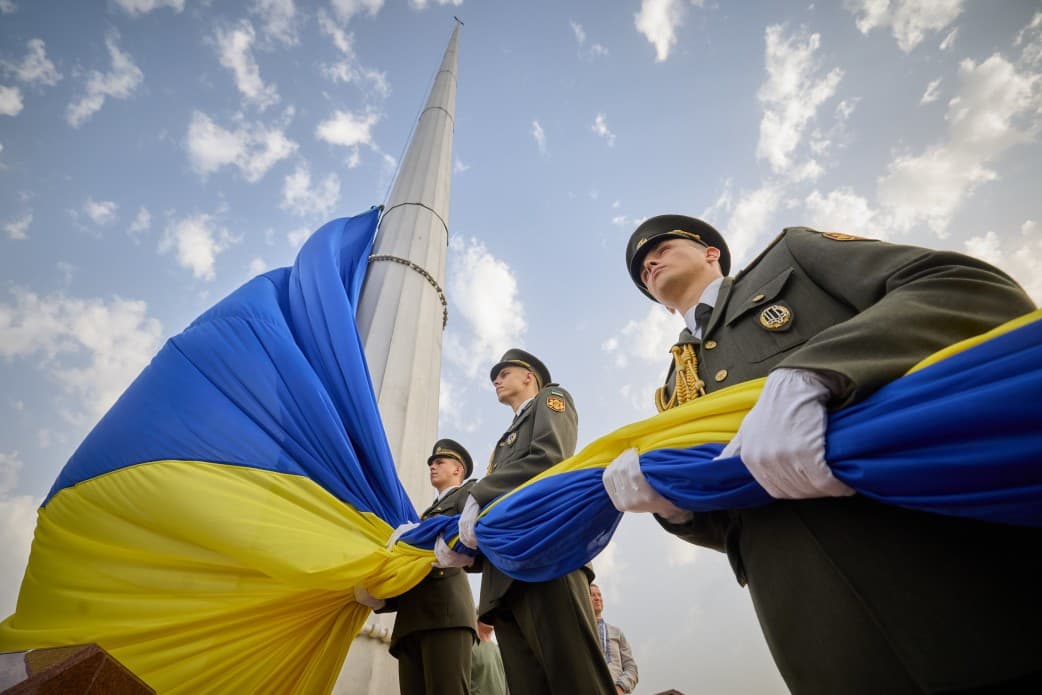
Each year, on Aug. 23, Ukraine celebrates the Day of the National Flag.
According to the official version of the events, a group of Soviet Ukraine lawmakers, from the pro-independence Democratic Bloc, brought the historic blue and yellow flag into parliament on Aug. 23, 1991.
The group demanded the Communist Party-led parliament grant Ukraine independence from the Soviet Union and reinstate the historic blue and yellow banner as the country's official flag.
A day later, Ukraine's independence was proclaimed.
Throughout history, Ukrainian political entities had different names and forms, but blue and yellow have always been closely linked to the country and its people. From the Principality of Galicia–Volhynia in the 13th century, and the Cossack Hetmanate in the 17th, to the Ukrainian People's Republic in the early 20th century, Ukrainian military leaders and soldiers fought under the blue and yellow banners. For Ukraine's enemies, subjugating the country and erasing its culture has always begun with banning the blue and yellow flag.
On Aug. 23, as Ukraine celebrates its flag, Ukrainian soldiers are fighting off the Russian invasion in the eastern and southern parts of the country. They are doing so to preserve the country's independence, and they are doing so under the blue and yellow flag.
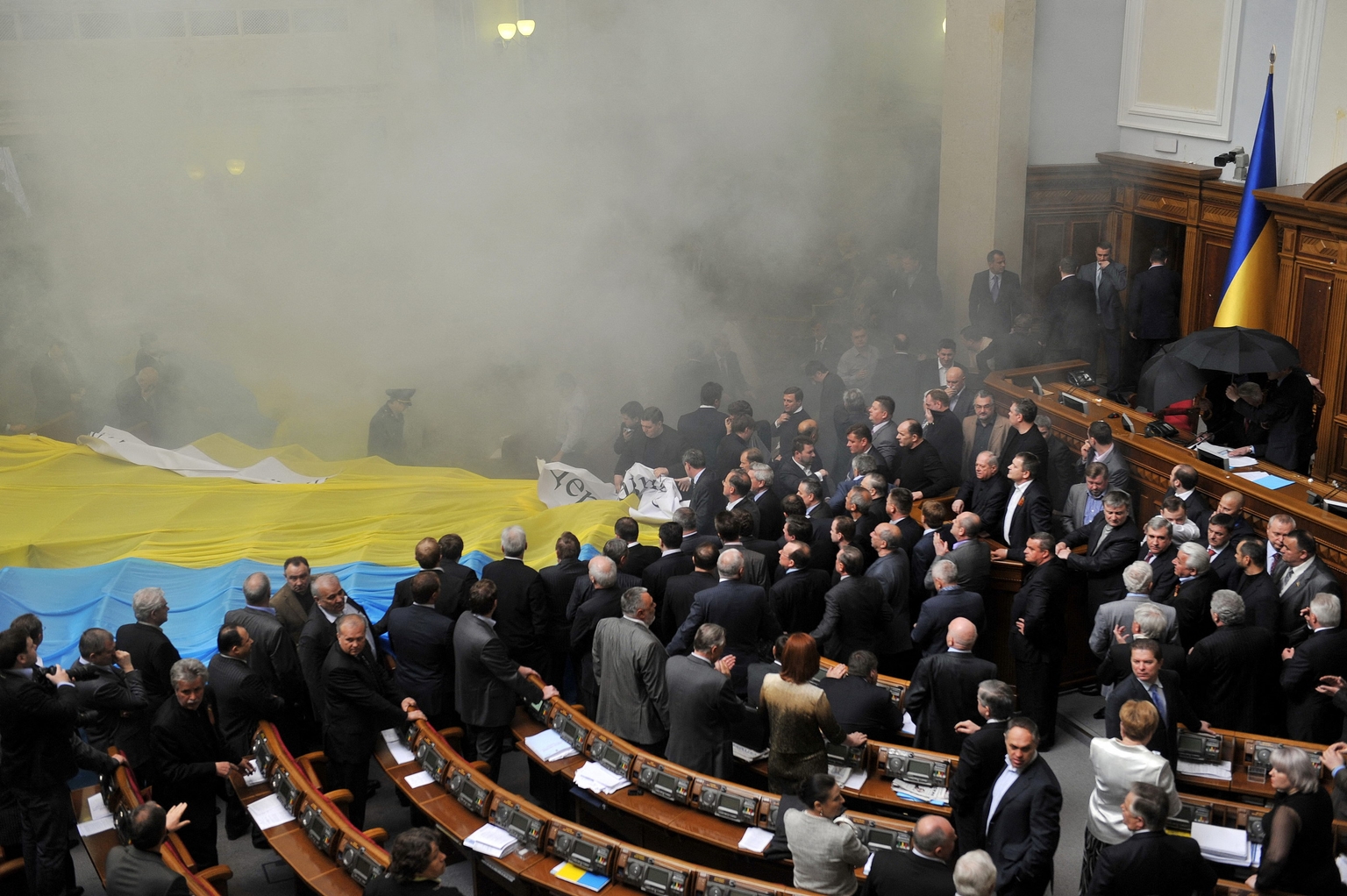
Lawmakers bring the national flag into parliament on April 27, 2010, as fighting broke out after the pro-Kremlin Party of Regions ratified a bitterly controversial deal with Russia extending the lease of the naval base in Sevastopol until 2042. (Getty Images)

Euromaidan protesters hold Ukrainian flags as they clash with riot police on Independence Square in Kyiv on Feb. 19, 2014. A day later, riot police open fire on protesters killing around 100 people. The Euromaidan Revolution ended after pro-Kremlin President Viktor Yanukovych fled the country. (Getty Images)

Ukrainians and Crimean Tatars take the streets of Simferopol, Crimea, in support of Ukraine's territorial integrity on Feb. 26, 2014. Days prior, Russian troops without insignia began seizing the Crimean Peninsula. (Stas Yurchenko | Radio Free Europe / Radio Liberty)

Russian forces patrol the occupied city of Sevastopol, Crimea, as the seized Ukrainian navy ship Slavutych is seen in the background on March 5, 2014. (Getty Images)

A woman holds a Ukrainian flag during a pro-Ukrainian rally in the eastern city of Luhansk on April 15, 2014. A month later Russian-led forces occupied Luhansk. They are holding the city ever since. (Getty Images)

A Ukrainian soldier raises the national flag over the recently liberated Troitske village in March 2015. In June 2022, Troitske was once again occupied by Russia. (Ivan Bogdan)
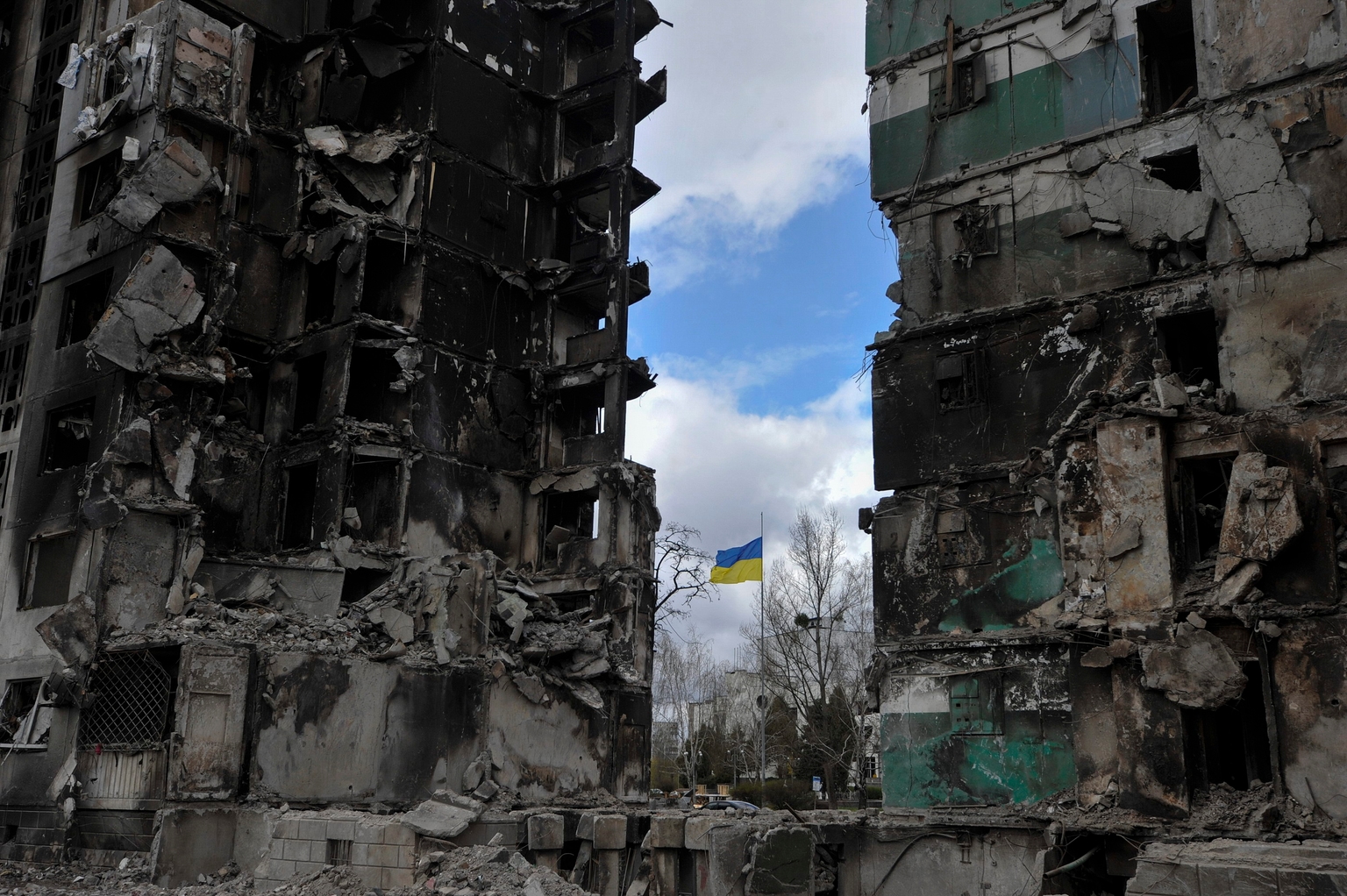
View of a damaged residential area in the city of Borodyanka, northwest of the Ukrainian capital Kyiv, on April 17. State Emergency Service pulled out the bodies of 41 people from under the rubble. (Getty Images)
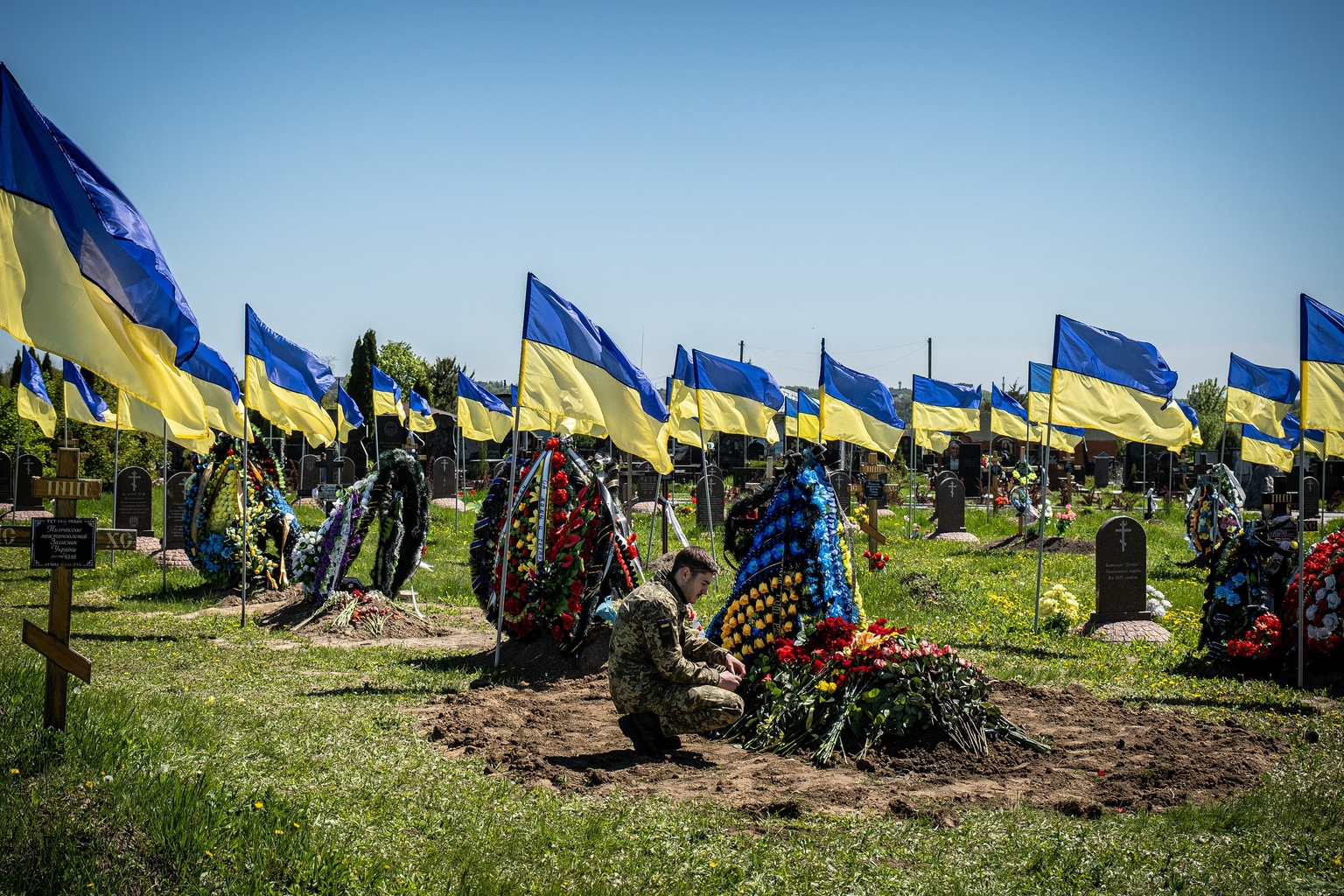
A Ukrainian soldier mourns in front of his comrade's tomb at a cemetery in Dnipro on May 7, 2022. (Getty Images)

A Ukrainian military cemetery in Chernihiv, bombarded by Russia, is photographed on April 6, 2022. (Stas Yurckenko / GRATY)
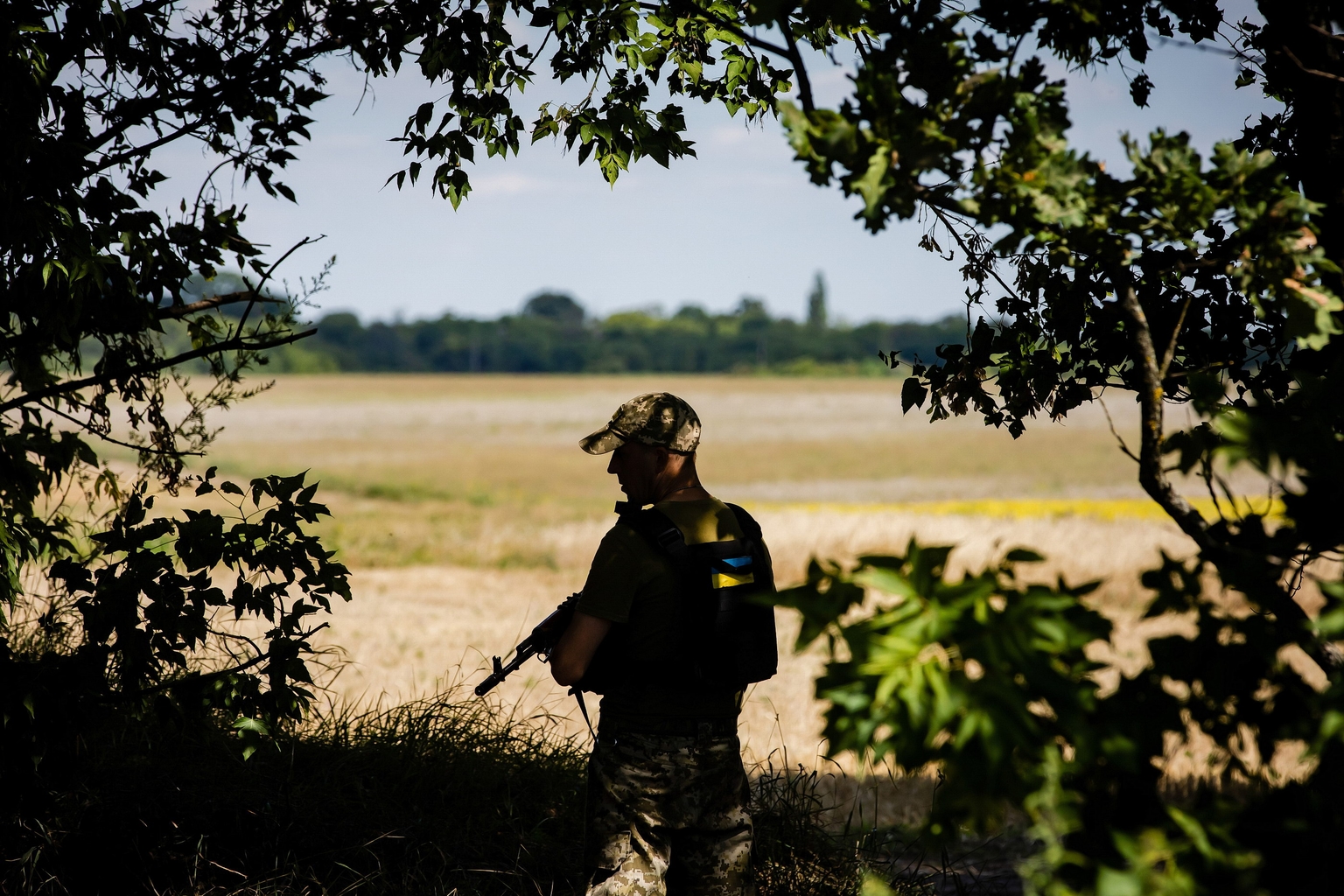
A soldier with a machine gun patrols near Kharkiv, Ukraine, on July 31, 2022. (Getty Images)
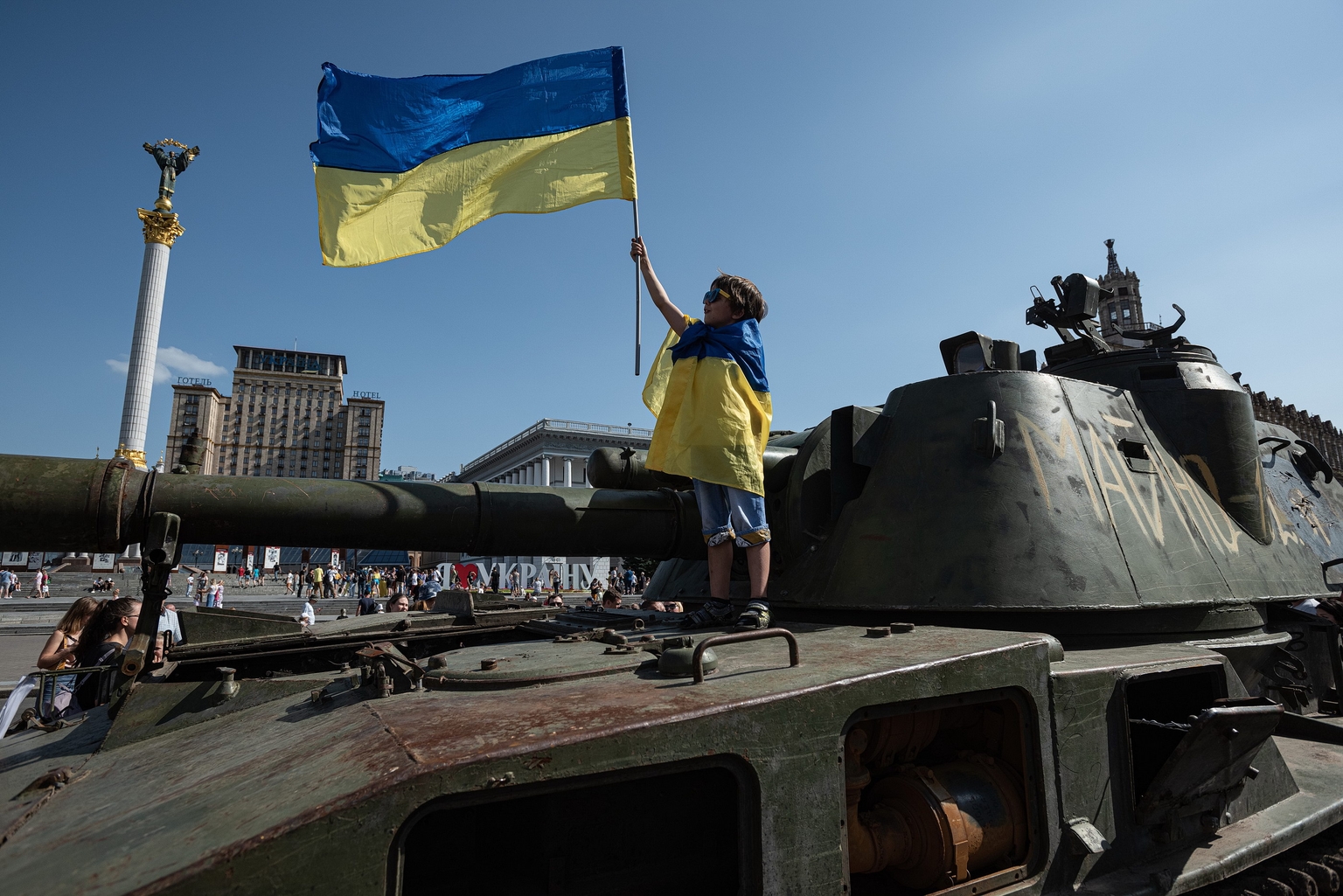
A boy holds a Ukrainian national flag as he stands on top of a Russian military vehicle on display in downtown Kyiv on Aug. 21, 2022. (Alexey Furman/Getty Images)













